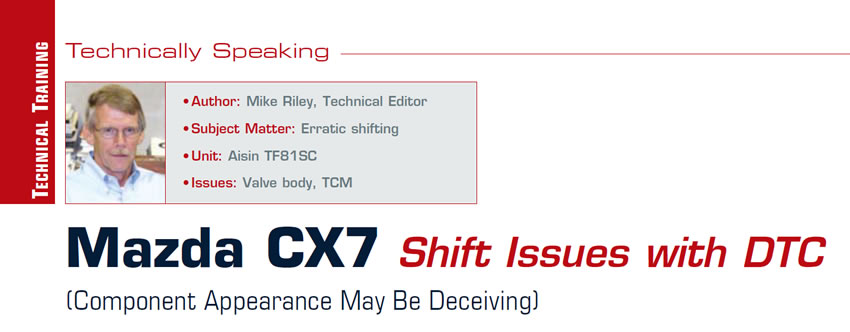
Technically Speaking
- Author: Mike Riley
- Subject Matter: Erratic shifting
- Unit: Aisin TF81SC
- Issues: Valve body, TCM
Complaint/Concern:
A customer arrived at the shop driving a 2007 Mazda CX7 equipped with 2.3L engine and a six-speed automatic. Depending on year, a Mazda CX7 could have several different transmission types from four-speed to six, but this model has an Aisin TF81SC (AW6A-EL).
The customer stated that recently the transmission was acting a bit strange and that the check-engine light would come on as well. The vehicle was taken for a test drive and sure enough a problem existed: erratic shifting. At times though, the unit seemed to work fairly well, which meant at least all of the basics were there.
In addition, a scanner was used to pull any trouble codes and one was found. The code listed was a P0979 indicating a solenoid “C” issue. The solenoid “C” DTC can implicate a number of possible causes and each one should be ruled out before proceeding, such as loose or corroded connections. Since wiring and harness connections seemed to be in tact externally, the next step was to look at the electrical case connector, which was under what appeared to be the MLPS (Figure 1). Again, all terminals were clean.
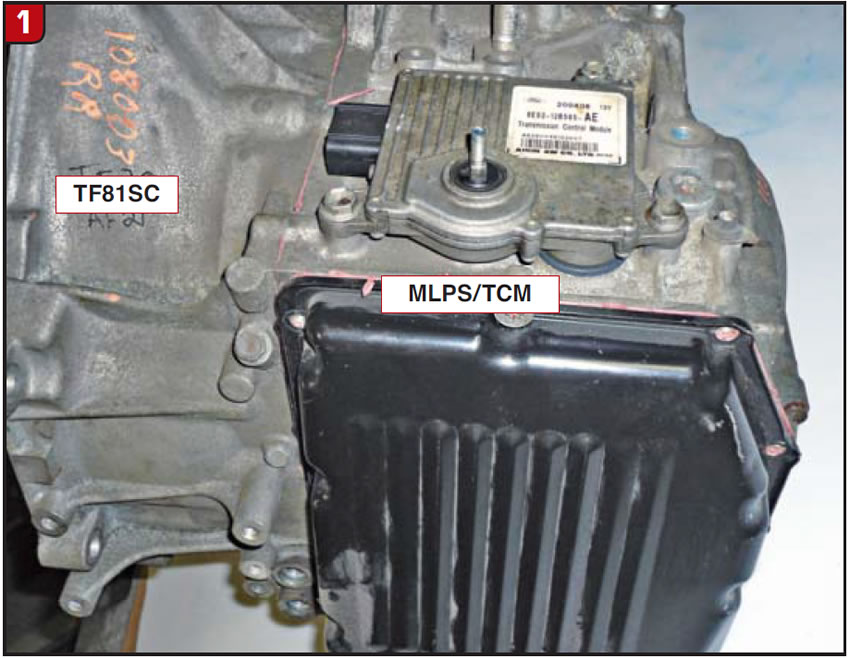
Based on the history of the Aisin TF80/81 series, it was decided to pull the valve body to test solenoids and inspect valves and valve bores. As expected, not only were there some worn valves that would require replacement, a couple of solenoids, including solenoid “C” did not seem to fire too well (Figure 2). In light of the valve-bore wear and potential solenoid problem, the valve body was replaced instead of repaired.
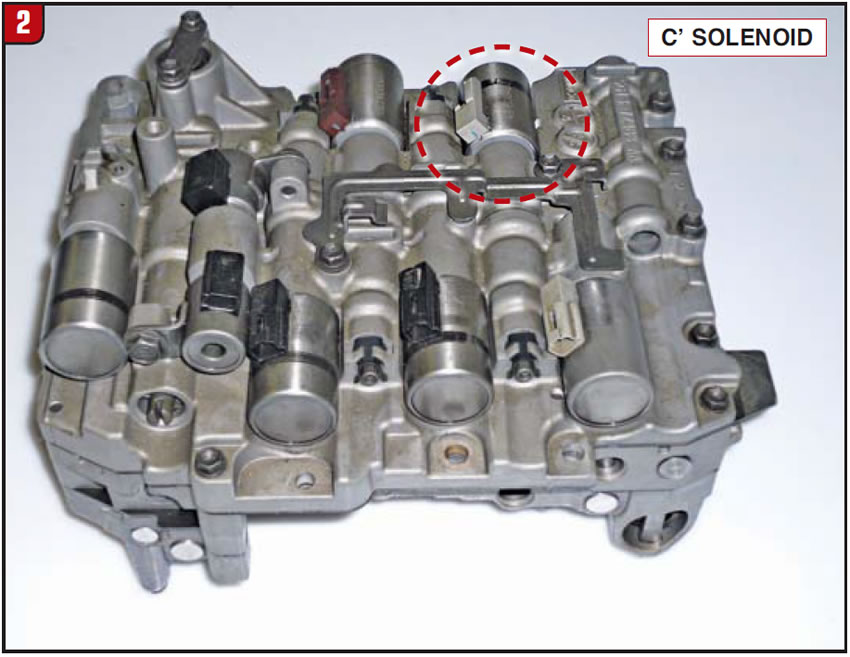
The new valve body was installed and the vehicle was taken for a road test. Initially, the unit worked well, but after a short time, the shifting issue returned.

Cause/Condition:
Although the replacement valve body did improve performance somewhat, it did not eliminate the key issue of erratic shifting nor did it prevent the DTC. One of the items that could also cause this condition is the TCM. Unlike several other computer-controlled transmissions, the TF81SC TCM is bolted on top of the transmission case, right where the MLPS would normally be. On the top side the TCM looks just like a normal MLPS (Figure 3).
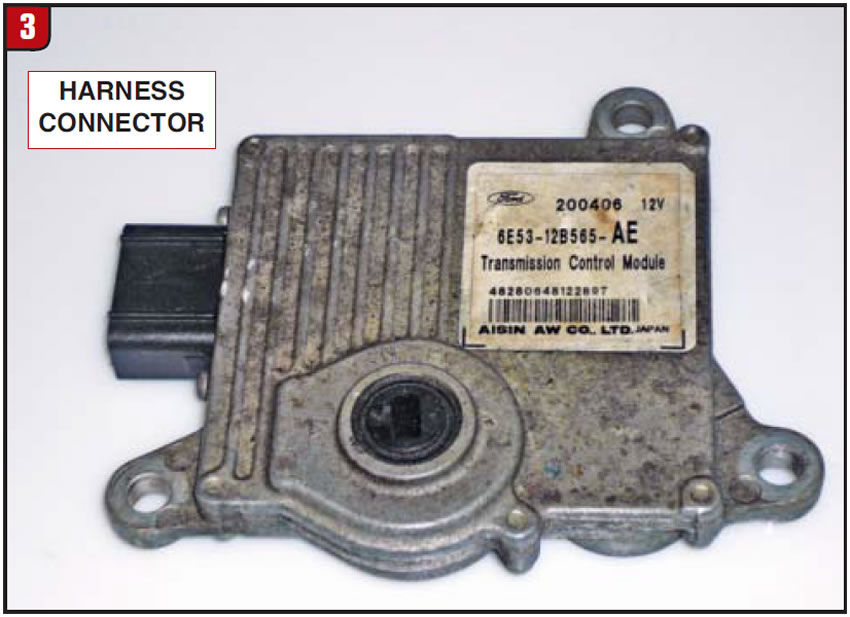
The bottom side of the unit is where the distinction is between a regular MLPS or DTR and a for real TCM (Figure 4). Note the multiple pin connector, which plugs into the electrical case connector. Direct diagnostics is a little harder with this type of arrangement due to not having access to harness wires between the TCM and the transmission.
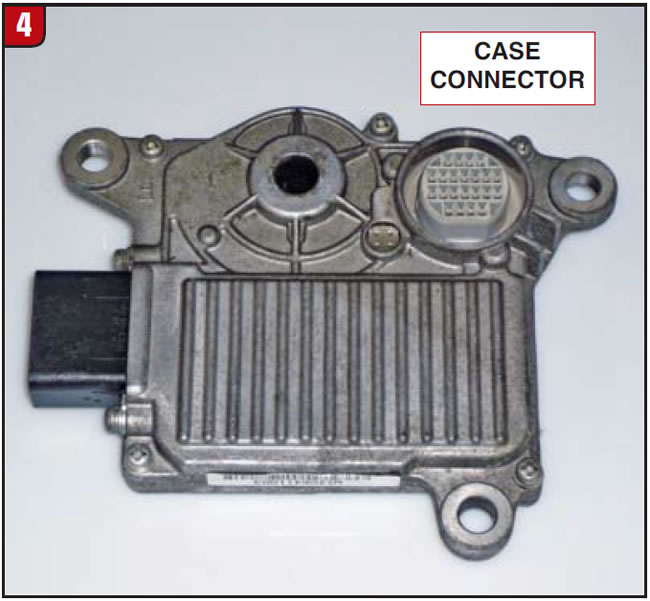
The case connector/solenoid harness was also checked out as well (Figure 5).
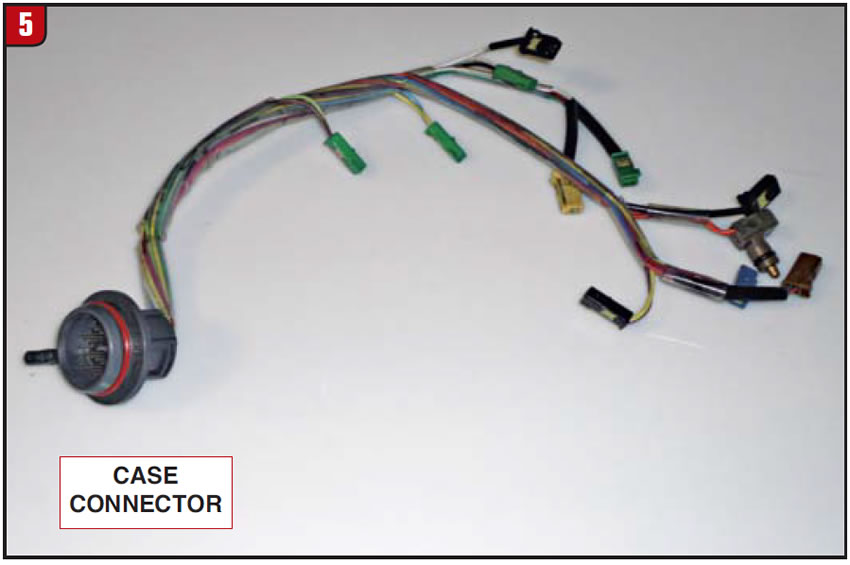
Correction/Modification:
Since everything else had been ruled out by either inspection, testing or replacement, a new TCM was purchased and installed using the customary programming and relearn procedures. The vehicle was driven and worked great.
Misdiagnosis can occur at times and with small-ticket items, which is no big deal. However, when components are expensive, such as replacement valve bodies or TCM’s, it’s important to be aware of the entire operating system and to include the customer in the decision process, as was done in this case.
A valve body or TCM can cause these types of issues and at times both may need to be replaced, which was done on the CX7. If the TCM was replaced first, the customer would have surely been back due to the valve-body wear and unhappy to boot. A TCM is model dependent, so verify the application before purchasing.

Special thanks to Don Stone for providing input & illustrations for this article. Don is an Accredited Automotive Manager (AAM) who owns AA Quality Transmission of Stuart, Fla.













